PART;2
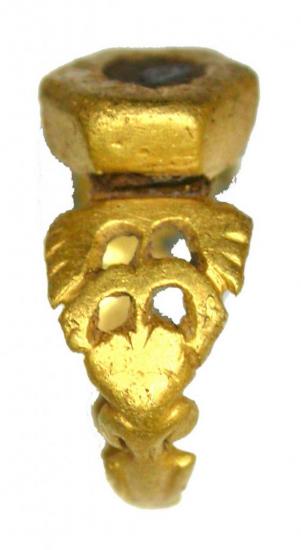
This gold finger-ring, discovered in Nottinghamshire, is made of 90-93 percent gold and has incised decorations and a tiny oval gem at center. Credit: C. Burrill; © Derby City Council. CC Attribution Sharealike license
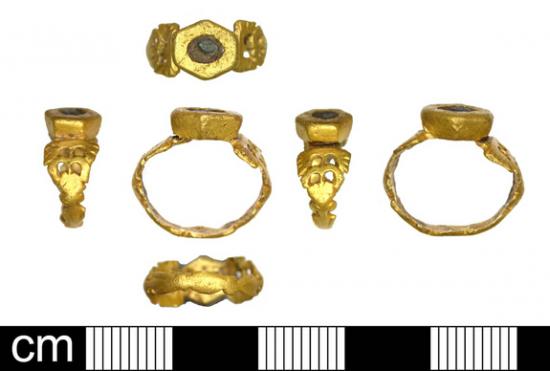
A view of the gold finger ring from different angles. Its diameter is tiny and it would likely have been worn by a child or woman. It may have been given as a betrothal ring. Credit: C. Burrill; © Derby City Council. CC Attribution Sharealike license
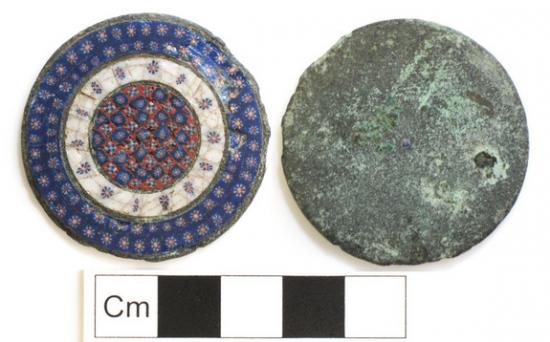
This colorful enamel decorated object would have been used on a Roman rider's harness. It depicts intricately detailed rosettes. Credit: R. Collins, © Portable Antiquities Scheme. CC Attribution Sharealike license
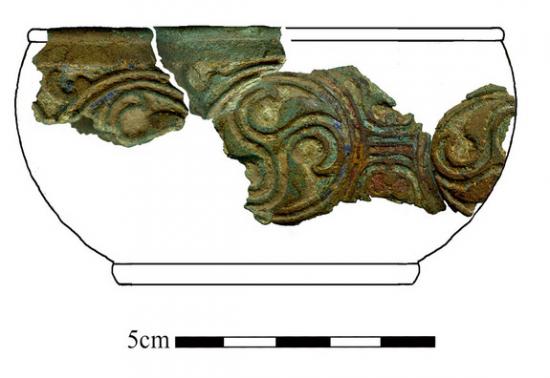
Fragments of a bowl containing Celtic motifs with enamel coloring. Enamel working was popular around 1,800 years ago in Roman Britain. Credit: K. Leahy, © Portable Antiquities Scheme. CC Attribution Sharealike license
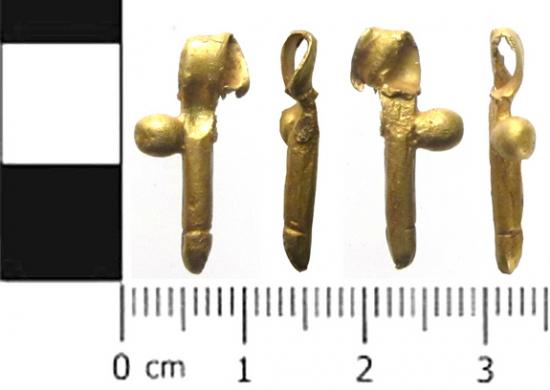
A gold penis pendent, the use of gold would have signified that its user was a person of status. Credit: . Darch © West Yorkshire Archaeology Advisory Service. CC Attribution Sharealike license
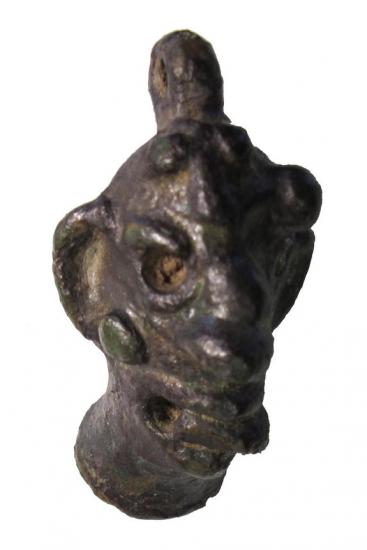
A grotesque head that would likely have been used as a measuring weight. Its appearance may have helped ward off the evil eye, aiding in economic transactions. Credit: A. Daubney © Lincolnshire County Council. CC Attribution Sharealike license
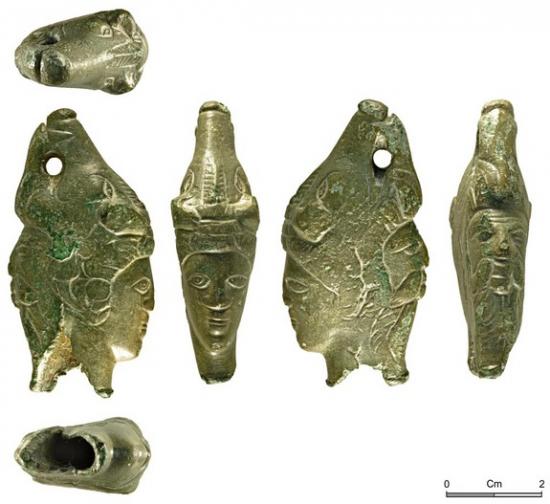
A hollow copper alloy handle, shown from different angles. The youthful face, with wings coming out from the hair, has been interpreted as the god Mercury. The older face on the other side, with mustache and beard, is believed to be a satyr or the god Pan. A boar's head can be seen on the piece at top. Credit: M. Lodwick, © National Museum of Wales. CC Attribution Sharealike license